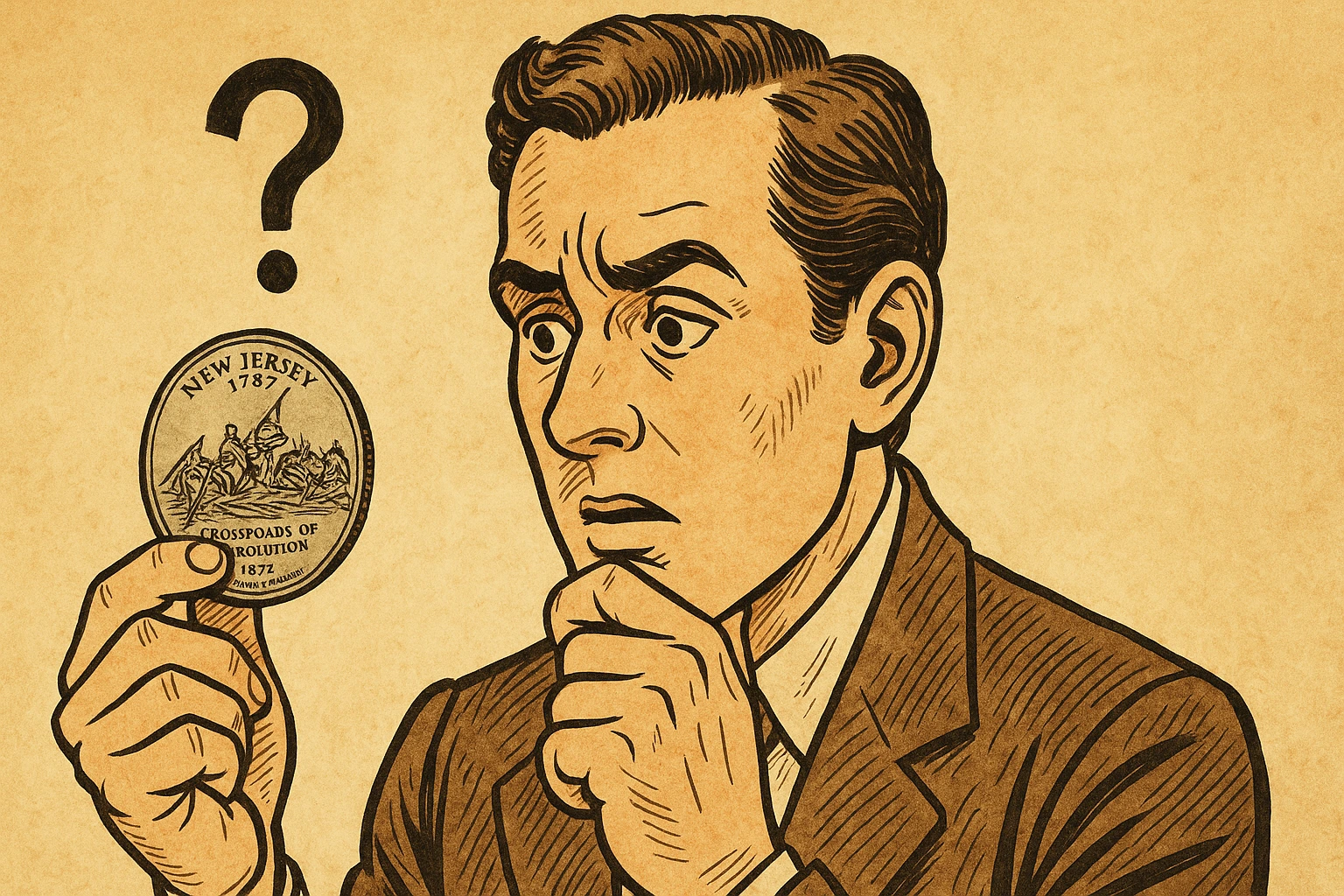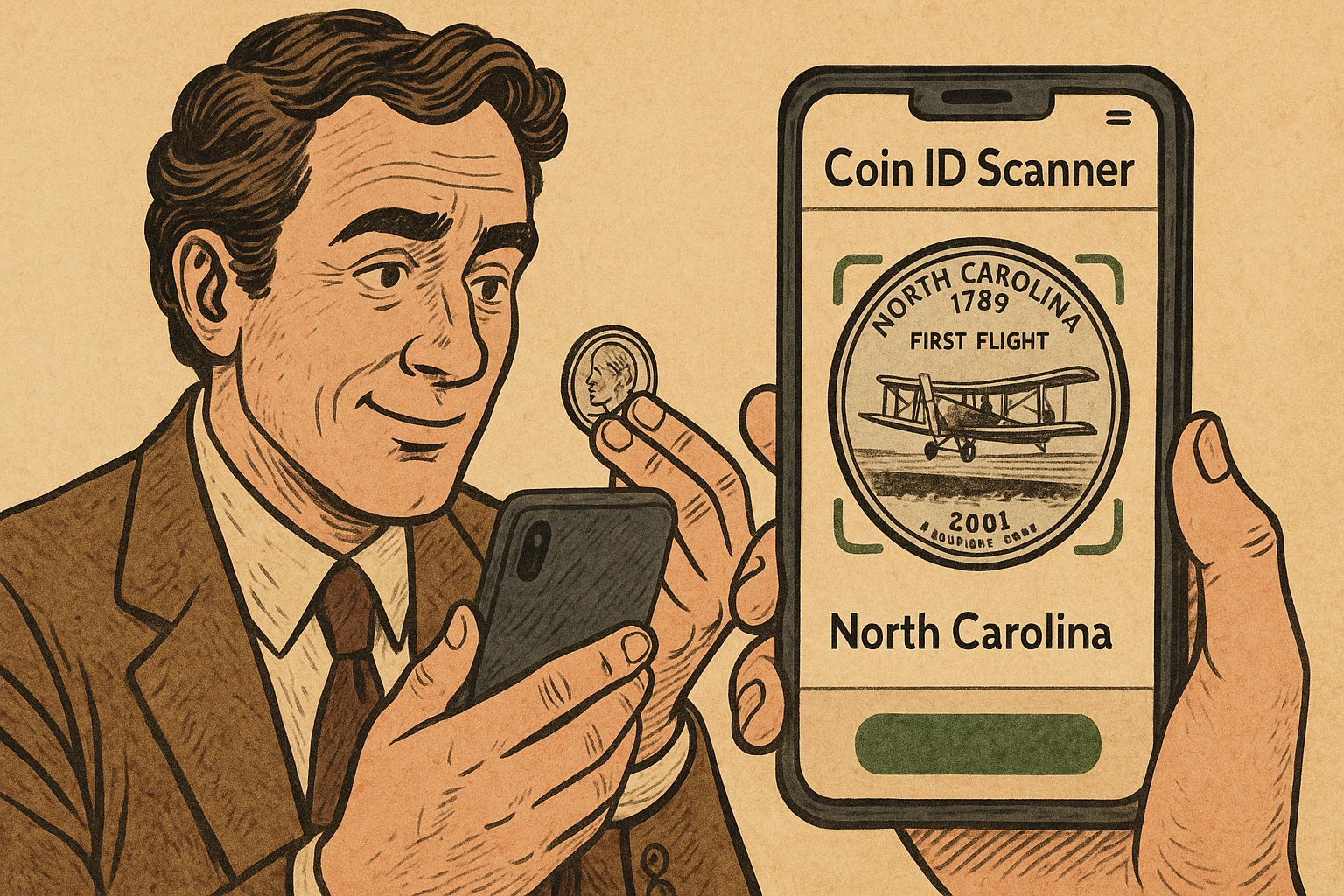If you’ve ever found a state quarter in your change and paused to look at its design, you’re not alone. Millions of Americans were captivated by the U.S. State Quarters Program—a bold initiative by the United States Mint that ran from 1999 to 2008. These coins didn’t just celebrate the 50 states of the Union; they sparked an entire generation’s interest in coin collecting. For many, these quarters became their first real connection to the world of numismatics.
But collecting state quarters worth money isn’t just about nostalgia or pretty designs—it’s a legitimate collecting pursuit with both educational and monetary value. From rare minting errors to proof sets, the world of state quarters is full of surprises.

What Are State Quarters?
The State Quarters Program was more than a currency update—it was a national cultural project. Launched in 1999, the program released one quarter for each state, following the chronological order of statehood. By 2008, all 50 states had their own quarter. In 2009, the program was extended to include six additional quarters representing U.S. territories: Washington, D.C., Puerto Rico, Guam, American Samoa, the U.S. Virgin Islands, and the Northern Mariana Islands.
Each reverse design features imagery significant to the state it represents. From Delaware’s Caesar Rodney on horseback to California’s John Muir and the Yosemite Valley, the coins reflect key moments, landmarks, wildlife, and historical figures.
Why Are State Quarters Collectible?
Not every state quarter is valuable, but many have become sought-after due to a mix of artistry, minting details, and market demand. Here are the key reasons they attract collectors:
1. Unique Designs
Each coin is a miniature piece of art. The diversity in designs—from natural wonders to historical icons—adds a visual and educational appeal. The range in style and symbolism makes them endlessly interesting for collectors of all ages.
2. Mint Marks Matter
State quarters were produced at multiple mints:
- P – Philadelphia
- D – Denver
- S – San Francisco (proof coins)
Collectors often seek a full set of each design from each mint. Some collectors go a step further and pursue both circulated and uncirculated versions, adding another layer of challenge and depth.
3. Rarity & Errors
Not all quarters are minted equally. Some have low mintage numbers or rare errors that significantly increase their value. For example:
- The 2004-D Wisconsin Extra Leaf High/Low errors are highly coveted.
- Quarters in pristine, uncirculated condition or special finishes can also command high prices.
4. Historical & Emotional Value
For many Americans, these coins are personal. They may commemorate the collector’s home state, a memorable trip, or a state with personal significance. This emotional connection often drives long-term interest and collecting.
How to Start Your State Quarter Collection
Getting started is easier than you think—but it helps to define your approach early. Here are the first steps for any aspiring collector:
1. Define Your Goal
Do you want just one quarter from each state? Or do you aim to collect every design from each mint? Perhaps you’re interested in only proof versions or specific errors. Clarifying your goal will make your collecting experience more focused and enjoyable.
Types of Collections:
| Collection Type | Description |
| Basic State Set | One coin from each of the 50 states |
| Complete Mint Set | One coin from each state and each mint (P, D, and S) |
| Proof Set Collection | San Francisco-minted proof coins, often in mirror finish |
| Error & Variety Collection | Quarters with minting mistakes or design variations |
2. Set a Budget
While many state quarters can be found in circulation, others—especially high-grade or rare errors—may need to be purchased. Setting a budget will help you stay focused and avoid overspending.
3. Start With Circulation
One of the best aspects of collecting state quarters is how accessible they are. Start by checking your pocket change, coin jars, or asking friends and family. You’d be surprised how many unique pieces are still in everyday use.
Organizing and Storing Your State Quarter Collection
Once your collection begins to grow, proper organization becomes essential. Without a method in place, it’s easy to lose track of which designs or mint marks you already own. A well-maintained collection not only looks impressive but also helps maintain the coin’s condition and value over time.
1. Choose the Right Storage Solution
Your choice of storage depends on your collecting style and goals. Here are the most popular methods:
- State Quarter Maps
Perfect for beginners and younger collectors, these colorful boards feature punch-out slots for each state’s quarter. They’re affordable, educational, and visually engaging—ideal for casual collectors or those collecting from circulation. - Coin Folders and Albums
For serious collectors, albums offer more structure. Each page typically displays quarters in order of release, organized by mint mark. High-quality albums also use acid-free materials to help preserve coins. - Coin Capsules and Tubes
If you’re collecting high-grade or proof coins, consider using clear, airtight capsules or tubes. These prevent exposure to air, oils, and dust—key to maintaining pristine condition. - Digital Cataloging Tools
Many modern collectors use apps or spreadsheets to digitally track their inventory. This helps when identifying gaps, tracking values, or sharing collections online. It’s also helpful when seeking specific coins at shows or online.
How to Identify and Value Your State Quarters
Not all quarters are created equal. While most circulated coins hold face value, others can be worth significantly more due to scarcity, condition, or mint errors. Identifying these standout pieces is where things get exciting.
1. Inspect for Errors and Varieties
Some state quarters gained fame for unintentional variations introduced during the minting process. For example:
| Coin Example | Error Type | Potential Value Range |
| 2004-D Wisconsin | Extra Leaf High or Low | $50 – $300+ |
| 2005 Minnesota | Double Die Reverse | $20 – $200+ |
| 2001-P New York | Double Strike | Varies by condition |
These errors are often microscopic and require close inspection. Magnifiers or digital scopes can help—but using a trusted app can be even more efficient.
2. Evaluate Coin Condition (Grading)
The better the condition, the higher the value. Coin grading follows a scale from Poor (P-1) to Perfect Mint State (MS-70). While professional grading by agencies like PCGS or NGC is ideal for high-value coins, you can learn basic grading to evaluate circulated pieces.
Grading Summary:
- Circulated Grades: G-4 (Good), VG-8 (Very Good), F-12 (Fine), VF-20 (Very Fine)
- Uncirculated Grades: MS-60 to MS-70 (Mint State)
- Proofs: PR-60 to PR-70 (Proof quality from San Francisco Mint)
Smart Tool for Modern Collectors: Coin ID Scanner App
Gone are the days of flipping through coin guides or second-guessing a coin’s origin. The Coin ID Scanner app is revolutionizing the way collectors interact with their hobby. Whether you’re on the go, at a coin show, or sorting change at home, this app puts professional tools at your fingertips.

Key Benefits of Coin ID Scanner:
- Instant Coin Recognition: Simply take a picture of your quarter, and the app instantly identifies the design, mint mark, year, and possible varieties.
- Accurate Market Valuation: See real-time value ranges based on recent market data.
- Detailed Coin History: Learn about the state’s featured design, the quarter’s minting history, and its cultural significance.
- Collection Tracker: Organize your coins digitally, mark duplicates, and set wish lists.
- Error Detection: The app highlights potential errors and varieties with side-by-side comparisons.
For any collector serious about learning and growing their collection efficiently, Coin ID Scanner acts like a pocket-sized numismatic expert.
Where to Find Valuable State Quarters
Even in an age of digital banking and contactless payments, physical coin circulation still offers surprises. State quarters are still out there—you just need to know where to look.
1. Start with Pocket Change
The thrill of discovering a missing quarter in your own wallet or coin jar is one of the joys of this hobby. Start here—it’s free, and you never know what you’ll uncover.
2. Visit Coin Dealers and Shows
Local dealers often have state quarters in bulk bins, and many are willing to trade. Coin shows offer even more opportunities, including access to rare and graded pieces.
3. Try Online Marketplaces (Caution Required)
Websites like eBay or dedicated numismatic auction platforms offer everything from raw coins to high-end proofs. Always check seller ratings and compare prices with known databases to avoid overpaying or buying counterfeits.
4. Coin Roll Hunting
Purchase rolls of quarters from your bank and search through them at home. This old-school method has proven surprisingly fruitful for finding missing states or rare mint marks.
Pro Tips for Building and Protecting a Meaningful State Quarter Collection
Whether you’re collecting as a hobbyist, an investor, or simply as a way to connect with American history, the success and satisfaction of your journey will depend on a few critical best practices. Let’s round out your guide with actionable tips to make your collection more organized, valuable, and future-proof.
1. Stay Informed with Numismatic Resources
Like any collectible market, coin values can fluctuate based on trends, new discoveries, or market demand. Staying informed will help you recognize valuable finds, avoid scams, and make smarter buying or trading decisions.
Helpful Resources:
- CoinWeek, Numismatic News, and PCGS CoinFacts offer real-time updates and historical analysis.
- Online forums like Coin Community or Reddit’s r/coins provide space to ask questions, share finds, and get advice from fellow collectors.
- Coin ID Scanner App: Use this to check coin info, prices, and possible errors on the go.
Knowing, for example, that a specific state quarter with a certain mint error is suddenly gaining attention can turn an overlooked coin into a prized possession.
2. Verify Authenticity Before Purchasing
When buying coins—especially online or at shows—verify authenticity to avoid replicas, misidentified errors, or overpriced listings.
Authentication Checklist:
- Check for official grading (e.g., PCGS, NGC) for high-value coins.
- Use the Coin ID Scanner to match design, mint mark, and error types.
- Request clear, close-up photos and compare with known examples online or through verified databases.
Avoid coins that lack provenance or are being sold far above market average without clear justification.
3. Preserve Your Collection the Right Way
Coins are delicate—exposure to oils, moisture, air, and friction can diminish their value dramatically. Here’s how to keep them in top condition:
| Storage Method | Pros | Best For |
| Coin Albums | Easy display and organization | Casual to intermediate collectors |
| Airtight Capsules | Prevent air and oil exposure | High-grade or proof coins |
| Archival Quality Folders | Affordable and protective | Large state quarter sets |
| Climate-Controlled Storage | Reduces humidity-related damage | Long-term investments |
Handling Tip: Always hold coins by the edges and avoid touching the surfaces. Use cotton gloves for proof or uncirculated coins.
4. Set Goals and Milestones
Creating a checklist or collection map gives your hobby direction. Consider these types of goals:
- Complete all 50 state quarters from circulation
- Find all “P” and “D” mint marks for each design
- Acquire at least one proof coin per year
- Locate at least three error coins
- Digitize your entire collection with photos and notes
Setting milestones helps you track progress and brings a rewarding sense of achievement as your collection evolves.
5. Teach Others or Collect with Family
Coin collecting can be a bonding experience. Teaching kids or sharing your passion with others not only passes down knowledge but also encourages the next generation to appreciate history, design, and finance.
State quarters are an ideal entry point for children due to their colorful themes and story-driven designs. Tools like state quarter maps or the Coin ID Scanner make the experience interactive and educational.
